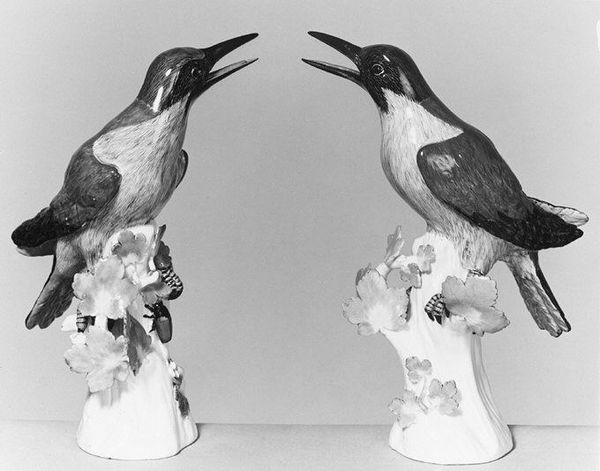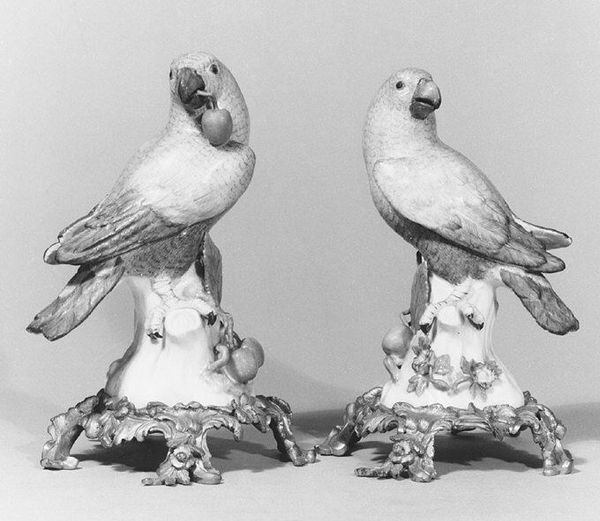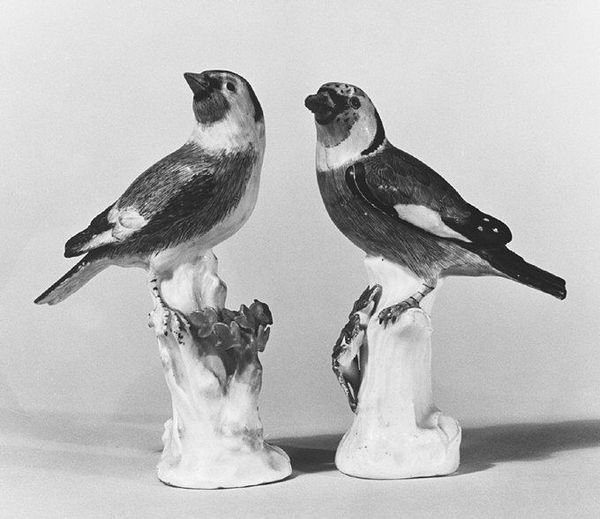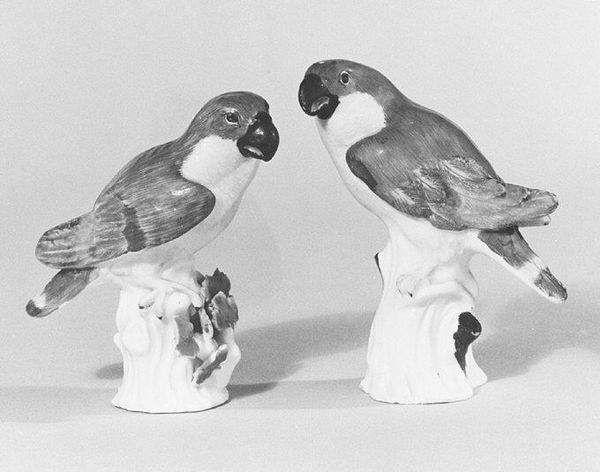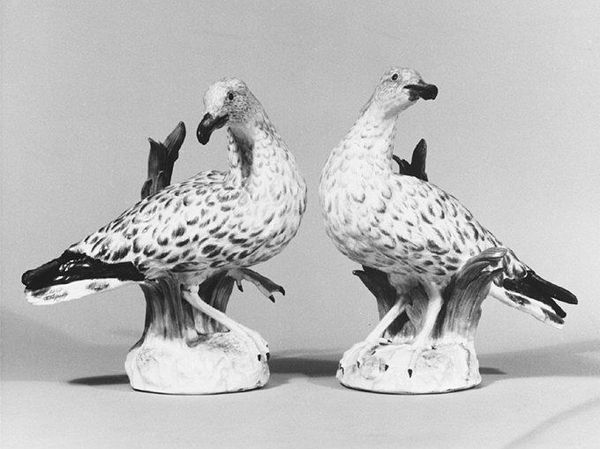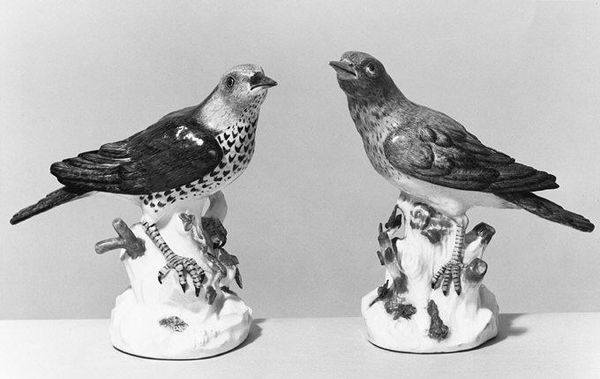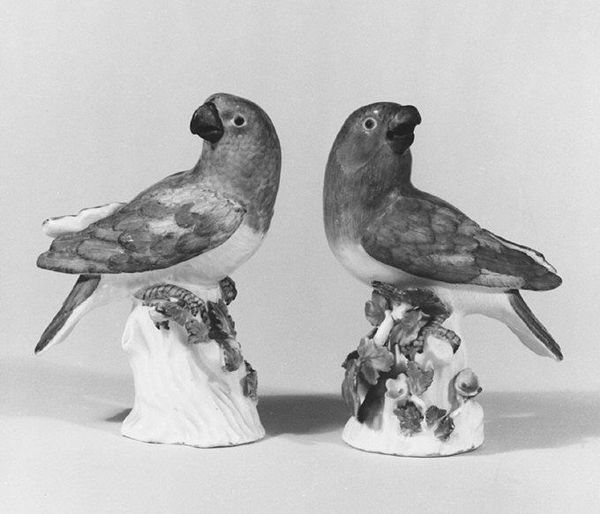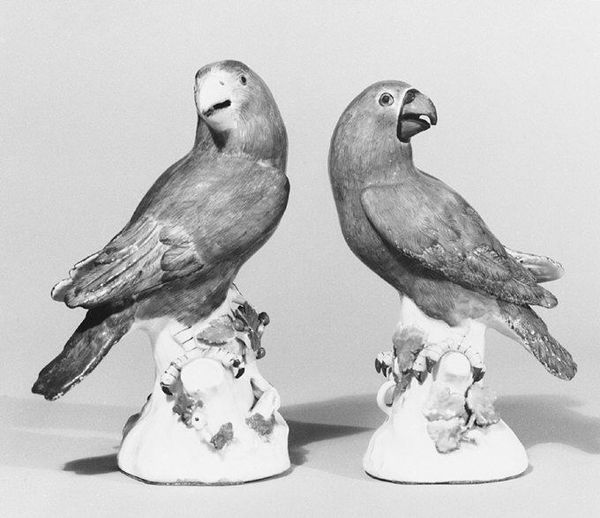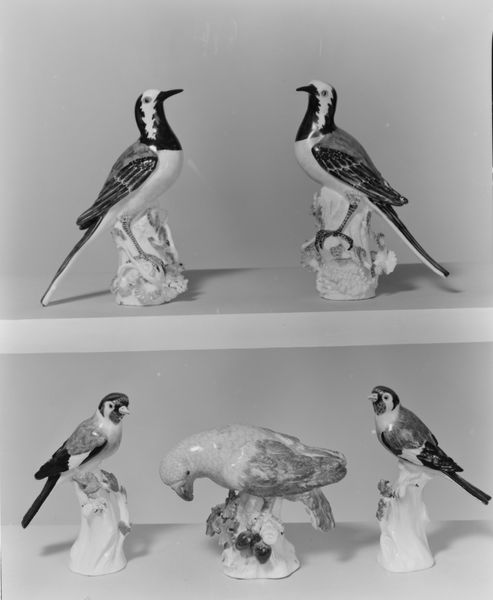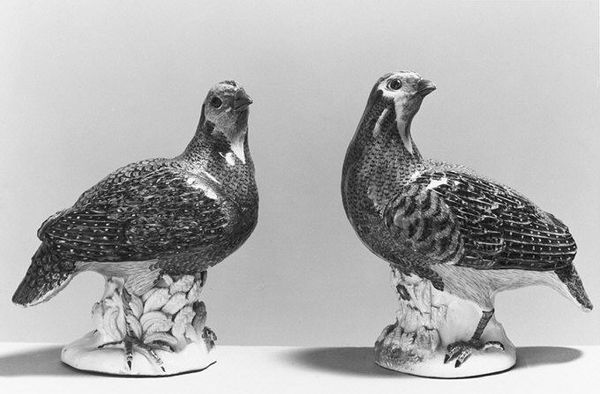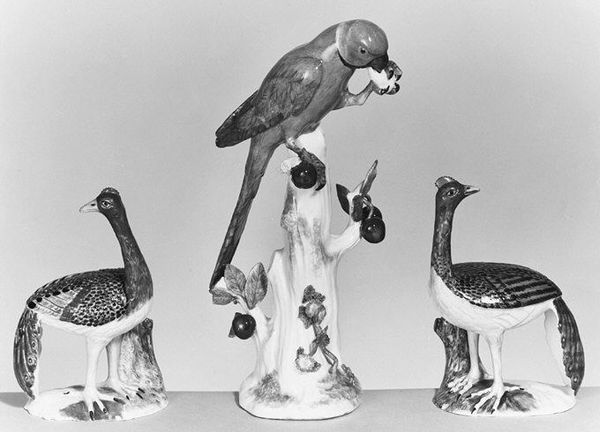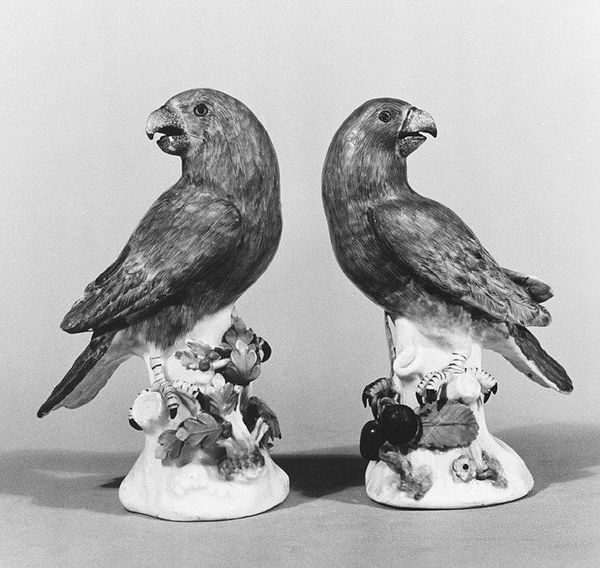
ceramic, porcelain, sculpture
#
sculpture
#
ceramic
#
porcelain
#
sculpture
#
decorative-art
#
rococo
Dimensions: Overall (.758): 4 × 3 3/8 in. (10.2 × 8.6 cm); Overall (.759): 3 7/8 × 3 1/2 in. (9.8 × 8.9 cm)
Copyright: Public Domain
Curator: Let's turn our attention to this captivating pair of finches. They were crafted from porcelain at the Derby Porcelain Manufactory sometime between 1760 and 1770, and they are currently housed in the Metropolitan Museum of Art. Editor: My first impression is their fragility—they seem so delicately poised, almost as if a gust of wind could topple them. The craftsmanship is stunning, though; each tiny detail has been painstakingly rendered. Curator: Absolutely, and it’s crucial to remember that the Derby factory wasn't just producing decorative objects; it was operating within a specific socioeconomic structure. These pieces, while seemingly innocent, reflect the complex systems of labor and consumption that fueled the porcelain industry at the time. Editor: That’s interesting, particularly when viewed through a lens of the rococo period, one defined by elitism and a clear class division. To imagine how labor was implicated in such displays of delicate art truly situates the artwork in a relevant perspective, and makes the artistry feel somewhat loaded. These finches are decorative, cute almost, but simultaneously, serve as a quiet testament to inequality. Curator: Precisely. Examining the materials further, the sourcing and processing of the porcelain itself becomes a story of globalization and the exploitation of resources. These birds represent leisure and privilege, commodified by mass production and elaborate consumerism in Europe. Editor: Looking at these representations of nature too, are the finches presented within the larger sociopolitical moment in Britain? I wonder if we might be reading an underlying colonial mentality. Here are finches represented in a seemingly simple form, perched upon a European household mantelpiece. How much does it change when we start looking for deeper meanings and implications of art in the 18th century, when colonialism starts accelerating? Curator: A compelling argument. These decorative arts objects served as cultural commodities reinforcing power dynamics. I am so interested in your thoughts on global identity, that would otherwise be discarded if one only were to superficially study this decorative ceramic piece. Editor: These are gorgeous objects with a lot of sociopolitical baggage. Curator: Indeed, and considering that, it certainly brings complexity into this little sculpture, and it encourages us to reevaluate assumptions about the relationship between artistic beauty, social realities, and inequality.
Comments
No comments
Be the first to comment and join the conversation on the ultimate creative platform.
